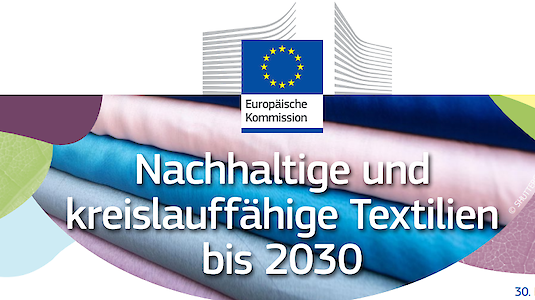The textile industry on the way to a sustainable and circular future!
How can the sustainable and circular transformation in the textile and apparel industry succeed?
The textile and apparel industry is an important, global and highly interconnected economic sector with a wide variety of products and services. It ranges from clothing, footwear and home textiles to medical and technical applications. In this context, clothing and footwear have always played a central role in basic human needs and well-being. However, fast fashion has become prevalent in the market over the last few decades. This business model ensures mass consumption with fast-moving and cheap clothing that is worn briefly and often discarded unused. The current production and consumption of textiles causes enormous burdens on the environment and climate, combined with a high consumption of resources and textile waste. In addition, this is often accompanied by negative impacts on human rights and working conditions.
The social, ecological, economic and technological challenges of the linear "take-make-use-waste" textile economy have already been clearly recognized by the European Commission in the Green Deal and the Circular Economy Action Plan. It has thus proposed a strategic reorientation that considers the entire life cycle of textile products. With the recently published EU Sustainable and Circular Textiles Strategy, the Commission addresses the environmental and digital transformation of the textile and clothing industry.
The EU Textile Strategy brings forward a clear vision for textiles up to 2030:
- The goal is for all textile products placed on the EU market to be durable, repairable, recyclable, made largely from recycled fibers, free of hazardous substances, and produced in compliance with social rights and the environment.
- High-quality, affordable textiles are available to consumers, and fast fashion is going out of style. Profitable reuse and repair services are widely available.
- The textile sector is competitive, resilient, and innovative because manufacturers along the value chain take responsibility for their products and have sufficient capacity available for innovative fiber-to-fiber recycling. Recyclable clothing rather than short-lived clothing has become the norm.
The EU Textile Strategy also proposes a number of concrete key measures:
- Mandatory textile design requirements under the Ecodesign Regulation for sustainable products. This will make sustainable and recyclable textile products the norm in the EU.
- The introduction of digital product passports as well as clear information on labels.
- Measures against greenwashing to protect consumers
- Proposal of a binding extended producer responsibility for textiles with environmentally related fee scales
- Measures that initiate a turning point in overproduction and overconsumption (fast fashion) and counteract the destruction of unsold or returned textiles
- Measures that address unintentional releases of microplastics
- Restrict textile waste exports and promote near-sustainable textiles globally
- Incentivize circular business models, including the reuse and repair sector.
Austria supports the circular transformation in the textile and apparel industry with its new requirements, opportunities and possibilities and has included it in the transformation focus "textile industry" in the upcoming Austrian circular economy strategy.
The sustainable and circular future is also coming to the textile industry: now we all have to shape it together!
